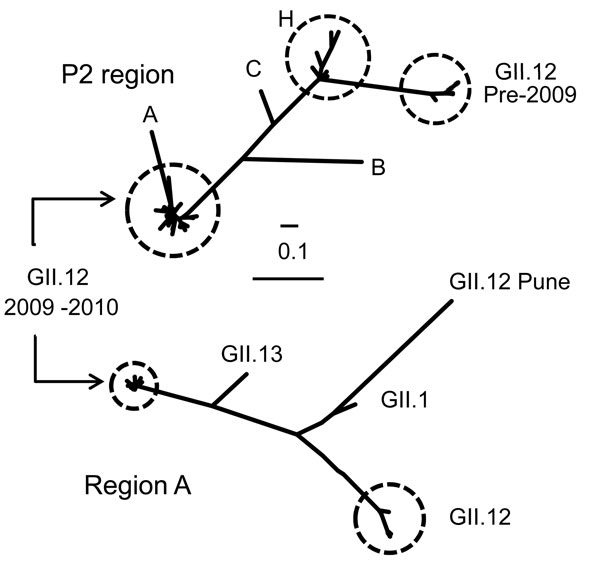Volume 17, Number 8—August 2011
Dispatch
Novel GII.12 Norovirus Strain, United States, 2009–2010
Figure 1

Figure 1. Phylogenetic trees of the P2 region in open reading frame (ORF) 2 and region A in ORF1 of noroviruses, United States. The P2 region and region A phylogenetic trees include GII.12 sequences from strains submitted to GenBank and GII.12 sequences reported in this study. In addition, region A analysis includes GII.12 Pune (GenBank accession no. EU921353), GII.1 (accession no. U07611), and GII.13 (accession no. DQ379714) sequences. Branch identifiers for the P2 region are as follows, with GenBank accession numbers in parentheses: A) Pune (EU921353); B) Pirna (AF427119); C) Wortley (AJ277618); H) Akabane (EF547403), Hiroshima (AB044366), Chitta virus (AB032758), Honolulu (AF414420), Gifu’96 (AB045603), U1GII (AB067536), U1 (AB039775), and Schwerin (AF397905). The GII.12 phylogenetic tree of the P2 region and region A region include GII.12 sequences StGeorge (accession no. GQ845370), Shelby (accession no. HQ688986), and all GII.12 noroviruses from 2009 through June 2010 (not distinguishable from GII.12 2009–10 cluster). The P2 region analysis also includes the Velence strain (accession no. HQ115742). Scale bars indicate nucleotide substitutions per site.